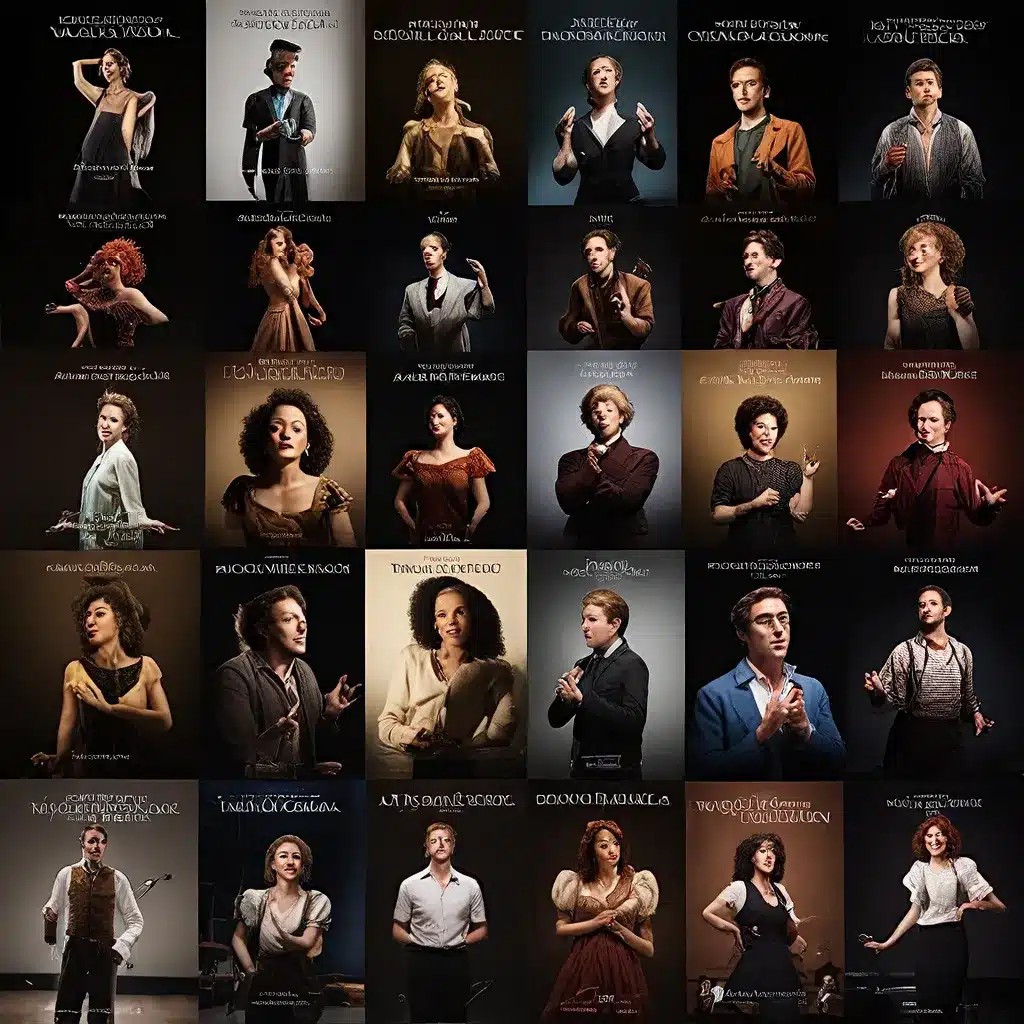
Unlocking the Magic of Adaptations
As a lifelong aficionado of musical theater, I’ve always been fascinated by the art of adaptation. The idea of taking a beloved classic and reimagining it for a modern audience is both thrilling and daunting. It’s a delicate balance of honoring the original while infusing it with a fresh perspective – a creative challenge that sets my heart racing.
Recently, I had the opportunity to visit the Musical Theater Center, a vibrant hub of education and performance dedicated to the ever-evolving world of musical theater. It was there that I discovered the true power of embracing the versatility of this art form, as I witnessed firsthand how the center’s talented team was breathing new life into timeless productions.
Respecting Tradition, Igniting Innovation
One of the key insights I gained from my time at the Musical Theater Center is the importance of striking a harmonious balance between tradition and innovation. As the center’s artistic director, Sarah, eloquently explained, “Adapting classics for contemporary audiences is a delicate dance, one that requires deep respect for the original work coupled with a bold vision for the future.”
Take, for example, their recent production of “West Side Story.” In the capable hands of the center’s creative team, this iconic 1950s musical was transformed into a captivating exploration of modern societal issues, seamlessly blending the timeless love story with powerful commentary on themes of immigration, gang violence, and the enduring struggle for acceptance. By preserving the core narrative and beloved musical numbers, while infusing the production with a fresh, thought-provoking perspective, the center was able to engage and captivate a new generation of theatergoers.
Embracing the Versatility of Musical Theater
The versatility of musical theater is truly extraordinary, and the Musical Theater Center is at the forefront of unlocking its boundless potential. As I delved deeper into the center’s approach, I was struck by the sheer breadth of adaptations they had undertaken, each one a unique and captivating exploration of the art form.
One particularly fascinating example was their reimagining of “The Phantom of the Opera.” Recognizing the timeless allure of the original, the center’s team set out to create a version that would resonate with a younger, more technologically savvy audience. By incorporating cutting-edge projection mapping and immersive sound design, they transformed the classic tale into a mesmerizing, high-tech spectacle that seamlessly blended the gothic grandeur of the original with a sleek, contemporary aesthetic.
But the center’s adaptations didn’t stop there. I was equally intrigued by their take on the beloved musical “The Sound of Music,” which they had reinterpreted through the lens of a post-war, politically charged landscape. By exploring the nuances of the Von Trapp family’s struggle to maintain their freedom and identity in the face of Nazi occupation, the production offered a poignant and thought-provoking exploration of the themes of resistance, resilience, and the power of the human spirit.
Embracing Diverse Perspectives
One of the most remarkable aspects of the Musical Theater Center’s approach to adaptation is their unwavering commitment to embracing diverse perspectives. As Sarah shared with me, “We firmly believe that the true magic of musical theater lies in its ability to reflect the diverse experiences and narratives of our ever-evolving world.”
This ethos was clearly evident in their recent production of “Rodgers and Hammerstein’s Cinderella,” which they had reimagined with a cast that beautifully represented the rich tapestry of cultures and identities that make up our global community. By casting performers of various backgrounds and incorporating elements of cultural celebration into the production, the center was able to create a vibrant, inclusive interpretation that resonated deeply with audiences of all ages and backgrounds.
The Art of Adaptation: Challenges and Triumphs
Of course, the process of adapting classic musicals for contemporary audiences is not without its challenges. As Sarah shared, “It’s a delicate balancing act, where we must honor the essence of the original work while also infusing it with a fresh perspective that speaks to the lived experiences of our audiences.”
One of the key challenges the center’s team has faced is finding the right balance between preserving the iconic moments that have captured the hearts of generations and introducing new elements that breathe life into the production. This often requires meticulous research, thoughtful analysis, and a deep understanding of the cultural and social contexts that shaped the original work.
But when the team gets it right, the results are nothing short of magical. As I witnessed during my visit, the center’s adaptations are not merely passive retellings of familiar stories; they are dynamic, immersive experiences that engage the audience on a profound emotional level, challenging them to see the world through a new lens and to connect with the universal themes that have endured across time and space.
Conclusion: A Boundless Artistic Frontier
As I reflect on my time at the Musical Theater Center, I am filled with a profound sense of awe and inspiration. This remarkable institution has not only embraced the versatility of musical theater but has also elevated it to new heights, pushing the boundaries of what is possible in this art form.
Through their innovative adaptations, the center’s team has demonstrated that the classics are not relics of the past, but rather living, breathing works of art that can be continually reimagined and reinterpreted to speak to the ever-evolving needs and desires of contemporary audiences. By honoring tradition while fearlessly forging new creative paths, they have opened up a boundless artistic frontier, one that promises to captivate and inspire generations to come.
As I bid farewell to the Musical Theater Center, I can’t help but feel a renewed sense of excitement for the future of this beloved art form. With visionary institutions like this leading the way, I know that the magic of musical theater will continue to thrive, evolving and adapting to the changing tides of our world, and leaving an indelible mark on the hearts and minds of all who experience it.

